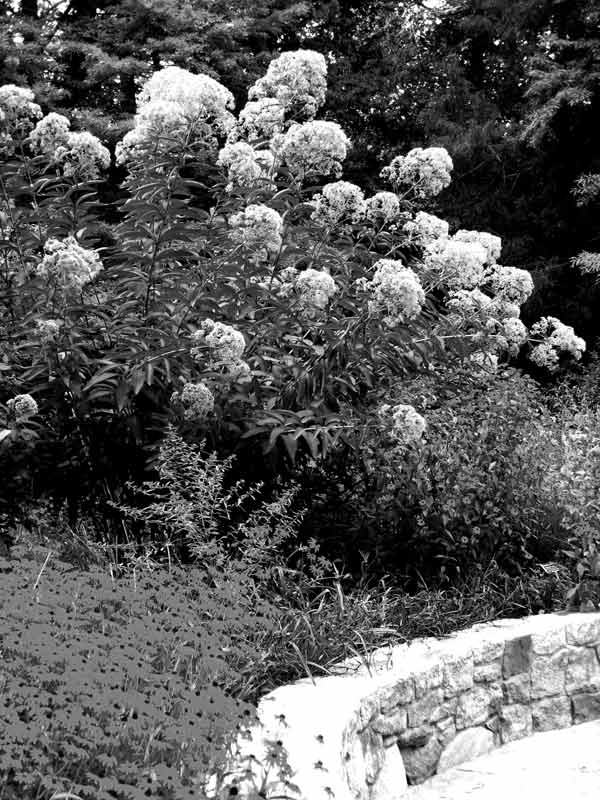Joe-Pye who?

Joe-Pye-Weed flower heads. Photo by Ken Moore
By Ken Moore
Flora Columnist
Common names and the meanings and tales associated with them are the source of endless wisdom, humor and trivia. I’ve always wondered who Joe-Pye really was. The familiar description is of a Native American herb doctor in the Massachusetts Bay Colony region.
The Indian’s name was Joe-Pye and he used a special plant to ease the discomfort of a common disease known as typhus, or typhoid fever. So the plant was commonly identified by early settlers as Joe-Pye-Weed.
My favorite plant this week is Joe-Pye-Weed, Eupatorium fistulosum. The local champion clump is behind the stone wall gathering circle in front of the Totten Center of the Botanical Garden. I’m really serious. If you have not seen this plant, then make certain you visit it sometime during the next week or so. I promise you’ll be impressed – and with only a little effort, you can have one in your very own garden. The Botanical Garden usually has some for sale or you can seek it out at local garden centers. I look forward every year to the one at the base of my deck that stands up to 12 feet tall so that I can enjoy it from the kitchen window where I am always dutifully washing dishes, uh huh!! Another common name for this impressive plant is Queen-of-the- Meadow, which is appropriate, for when you see it standing regally tall in Carolina mountain meadows, you will quickly agree that this plant is truly a queen among neighboring plants.

Giant clump of Joe-Pye-Weed at N.C. Botanical Garden. Photo by Ken Moore
Architecturally, this plant is a year-round knockout. In mid-summer, its rounded conical pink-to-purple flower heads are covered with one to a dozen butterflies gingerly searching the thousands of tiny flowers for nectar. It will take a keen eye, easier with a botanist’s hand lens, to detect that each tiny flower cylinder is really a tight cluster of minute disc or tubular flowers, like the ones you find in the center of a Black-eyed Susan or other daisy-like flower in the Composite or Aster Family. Sadly, this year’s late freeze and extreme drought have reduced the usual abundance of butterflies – but if butterflies are about, you will find them on the heads of Joe-Pye-Weed.
Now pay attention to this horticultural tip! Once you have a clump established – a naturally wet area is perfect – please do not cut it back in the fall. The stems are hollow, and if you cut them to the base in the fall, as part of that awful “putting the garden to bed for the winter†action, you will lose your plant. The reality is that those hollow stems cut close to the ground in the fall become reservoirs for rain water, and when winter’s freezing temperatures exert themselves, the crowns, or bases of the plant, are frozen and split and the plant dies. Better to leave those handsome flowering stalks standing tall through the winter months in which birds will perch and for the sheer beauty of garden architecture that winter conditions produce.
Email Ken Moore at flora@carrborocitizen.com.
Find more Ken Moore Citizen columns at The Annotated Flora


Comments are closed.